The escalating tensions between Israel and Iran have brought unprecedented attention to one of America’s most formidable conventional weapons: the GBU-57 Massive Ordnance Penetrator (MOP) 1. This 30,000-pound bunker buster bomb represents the pinnacle of earth-penetrating munitions technology, specifically designed to destroy the world’s most heavily fortified underground facilities 23.
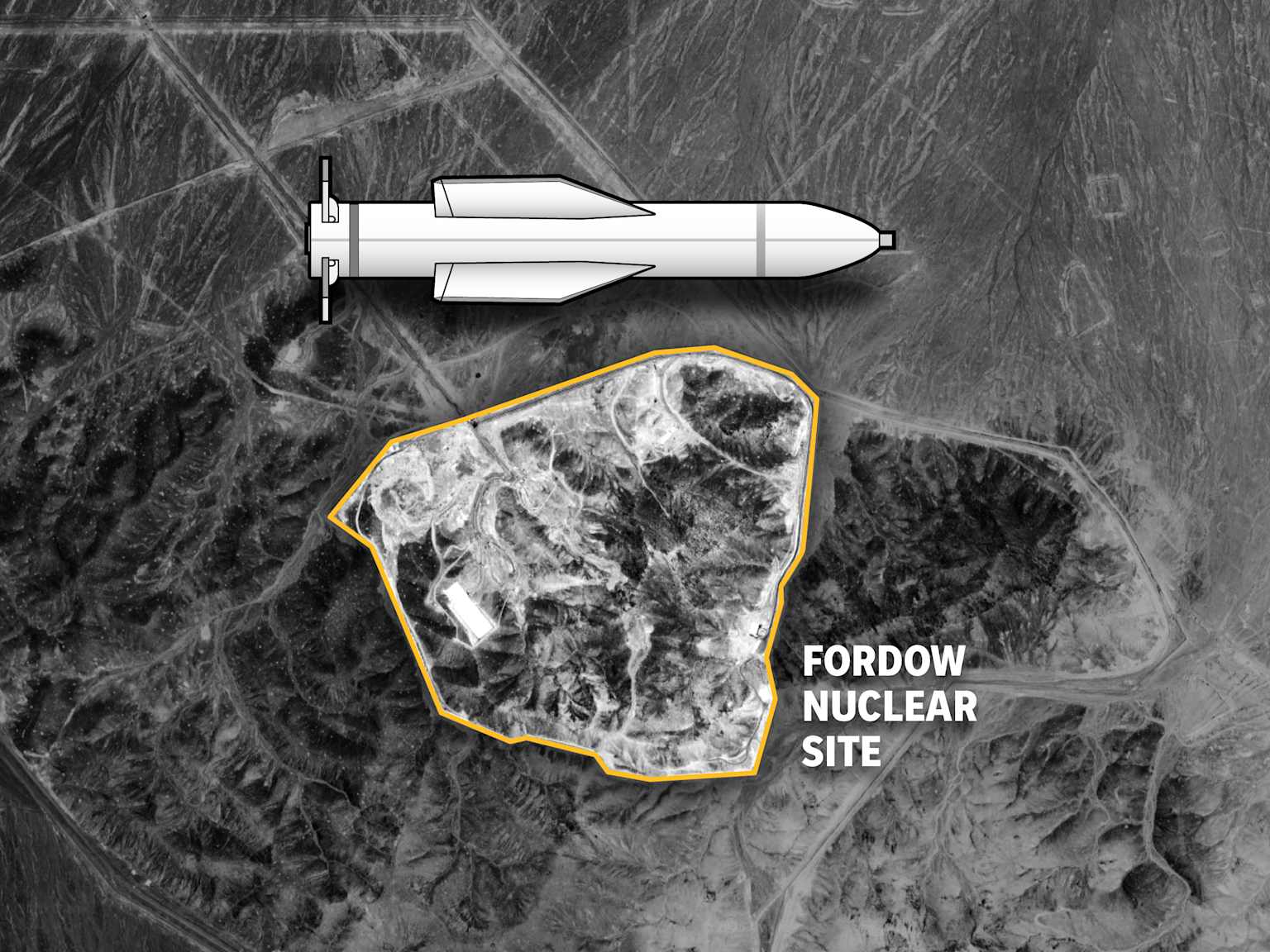
A schematic diagram of a large penetrator bomb, such as the GBU-57, overlaid on an aerial view of the Fordow Nuclear Site.
At the center of current military discussions lies Iran’s Fordow Fuel Enrichment Plant, a uranium enrichment facility buried deep within a mountain near Qom 45. The facility’s extreme depth and sophisticated defenses have made it virtually impervious to conventional airstrikes, leading military analysts to conclude that only the GBU-57 MOP possesses the potential to neutralize this critical target 678.
The Evolution of Bunker Buster Technology
Modern bunker buster bombs emerged from the harsh realities of the 1991 Gulf War, when allied forces discovered that existing munitions could not penetrate Iraq’s deeply buried command bunkers 9. The U.S. Air Force rapidly developed the GBU-28, weighing 4,400 pounds and capable of penetrating 100 feet of earth or 20 feet of reinforced concrete 9.
However, as adversaries began constructing even deeper and more heavily protected facilities, American military planners recognized the need for a dramatically more powerful penetrating weapon 10. The Defense Threat Reduction Agency launched the MOP project in 2004, partnering with the Air Force Research Laboratory to create an unprecedented bunker-busting capability 11.

Comparative diagram showing the penetration depth of the Massive Ordnance Penetrator (MOP) against older bunker buster bombs like the BLU-109 and GBU-28.
The development program faced significant technical challenges, including the need to create a weapon system that could survive the extreme forces of deep penetration while maintaining precision guidance capabilities 2. Boeing was ultimately awarded the contract in 2004, with the first operational bombs delivered to the Air Force in 2011 1211.
Technical Specifications and Capabilities
The GBU-57 MOP represents a quantum leap in bunker-busting technology, weighing six times more than its predecessor, the GBU-28 213. At 30,000 pounds, the weapon measures 20.5 feet in length with a diameter of 31.5 inches, making it the largest conventional bomb in the U.S. arsenal 312.
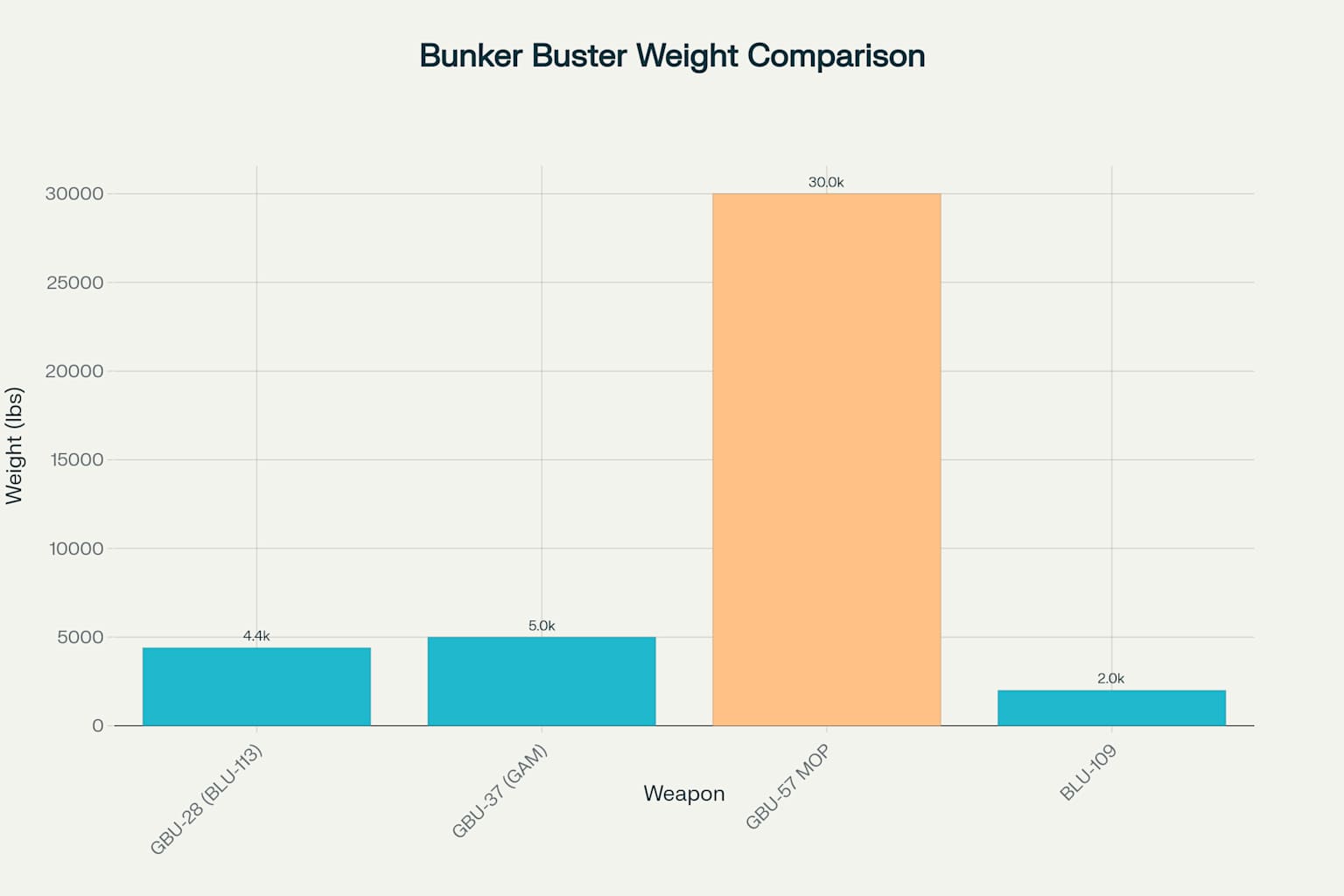
Weight Comparison of US Bunker Buster Weapons
The bomb’s warhead contains 5,342 pounds of high-performance explosives, including AFX-757 and PBXN-114 compounds specifically optimized for controlled detonation in confined underground spaces 212. The weapon’s casing is constructed from high-density Eglin steel alloy, engineered to withstand the tremendous stresses encountered during deep penetration 2.
Penetration capabilities vary significantly depending on target materials, with the MOP reportedly able to pierce up to 200 feet of earth or 60 feet of reinforced concrete with a compressive strength of 5,000 PSI 21012. However, Iranian domestic research has produced concrete exceeding 30,000 PSI, which could dramatically reduce the bomb’s effective penetration depth 2.
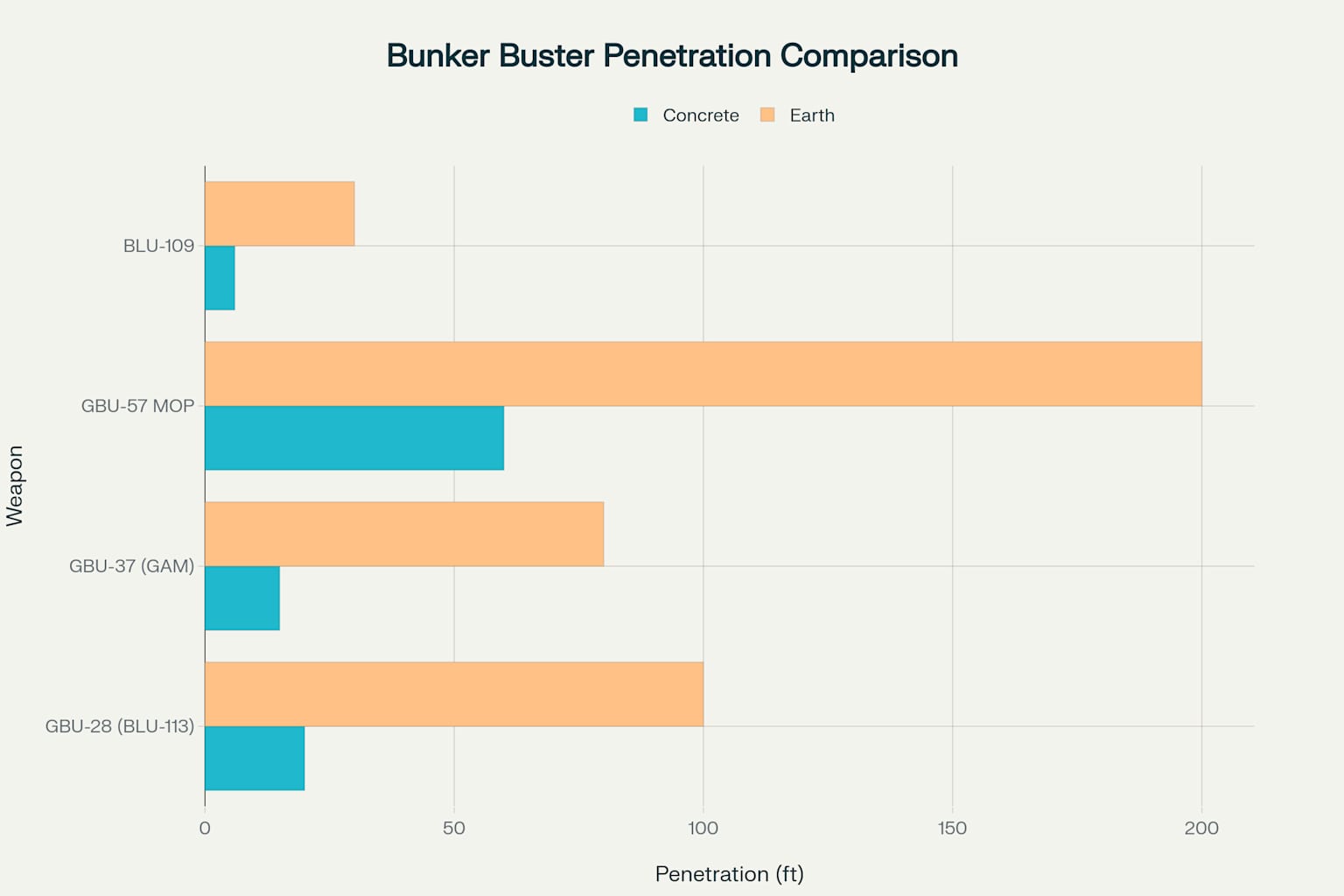
Comparative Penetration Capabilities of US Bunker Buster Weapons
The weapon employs a sophisticated GPS/INS guidance system that enables precision strikes within 20 feet of the intended target 12. Grid fins located along the bomb’s midsection provide flight stability and allow for trajectory adjustments during descent 10.
How Bunker Buster Bombs Work
The fundamental principle behind bunker buster bombs relies on converting gravitational potential energy into kinetic energy for maximum penetration 1415. When dropped from high altitude, the GBU-57 MOP accelerates to supersonic speeds, with its tremendous mass and hardened steel construction allowing it to punch through multiple layers of protection 1617.
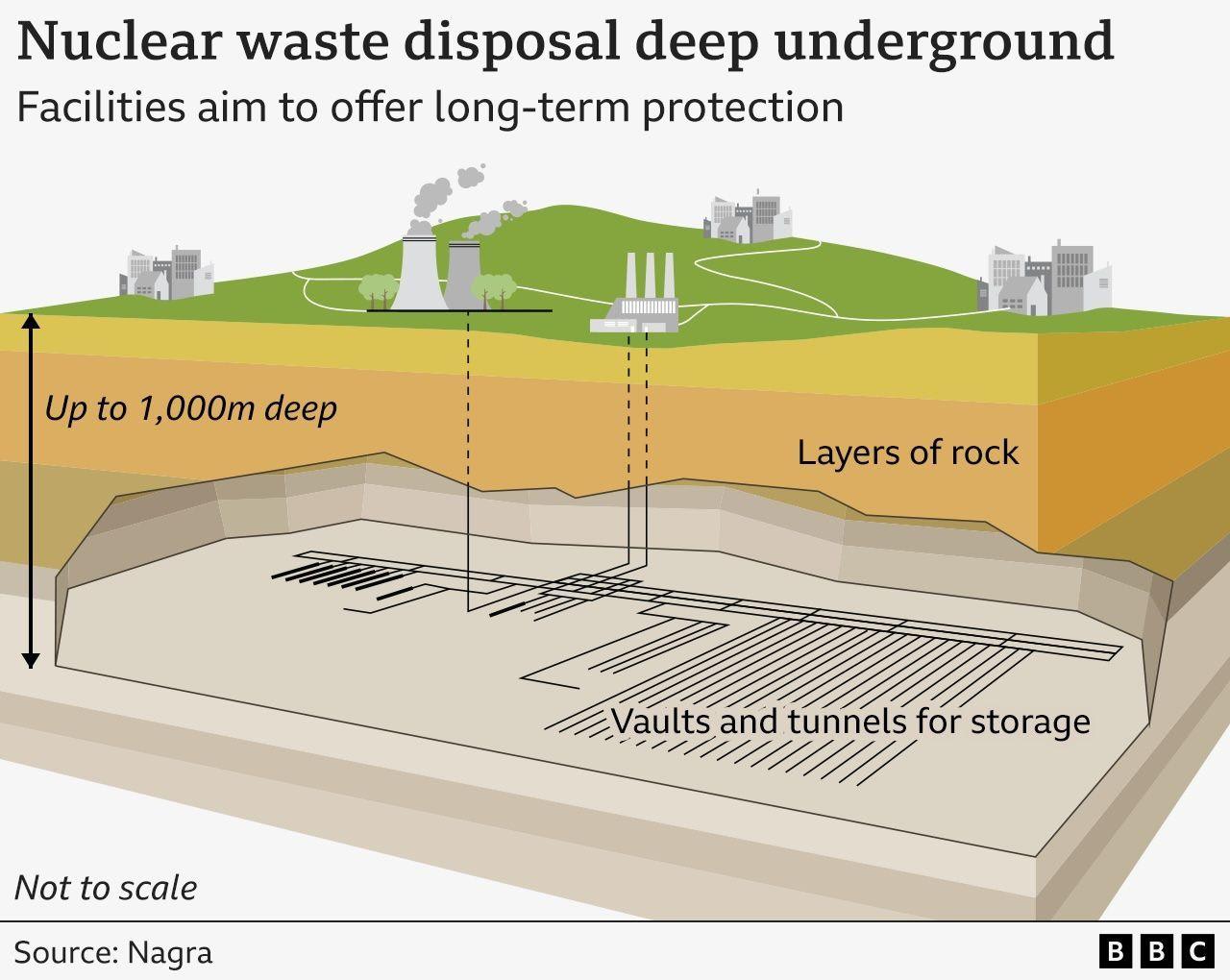
Diagram illustrating a deep underground nuclear waste disposal facility, showing vaults and tunnels buried up to 1,000 meters deep within layers of rock.
The weapon’s guidance system continuously adjusts its trajectory during flight using data from GPS satellites and internal navigation systems 10. Four lattice fins at the rear of the bomb respond to guidance commands, making real-time corrections to ensure accuracy 14.
Upon impact, the bomb’s kinetic energy enables it to penetrate deep into hardened structures before detonation 15. The Large Penetrator Smart Fuze (LPSF) controls the timing of explosion based on penetration depth and target characteristics, ensuring maximum destructive effect 210.
The delayed-action fuzing system is critical to the weapon’s effectiveness, preventing premature detonation at the surface while allowing the bomb to reach its intended depth 15. Advanced void-sensing capabilities can detect large cavities within underground structures, triggering detonation at optimal moments 2.
The Fordow Challenge
Iran’s Fordow Fuel Enrichment Plant represents one of the most challenging targets for conventional military strikes 45. Constructed beginning in 2006, the facility is buried 80-110 meters underground within a mountain massif near the holy city of Qom 518.
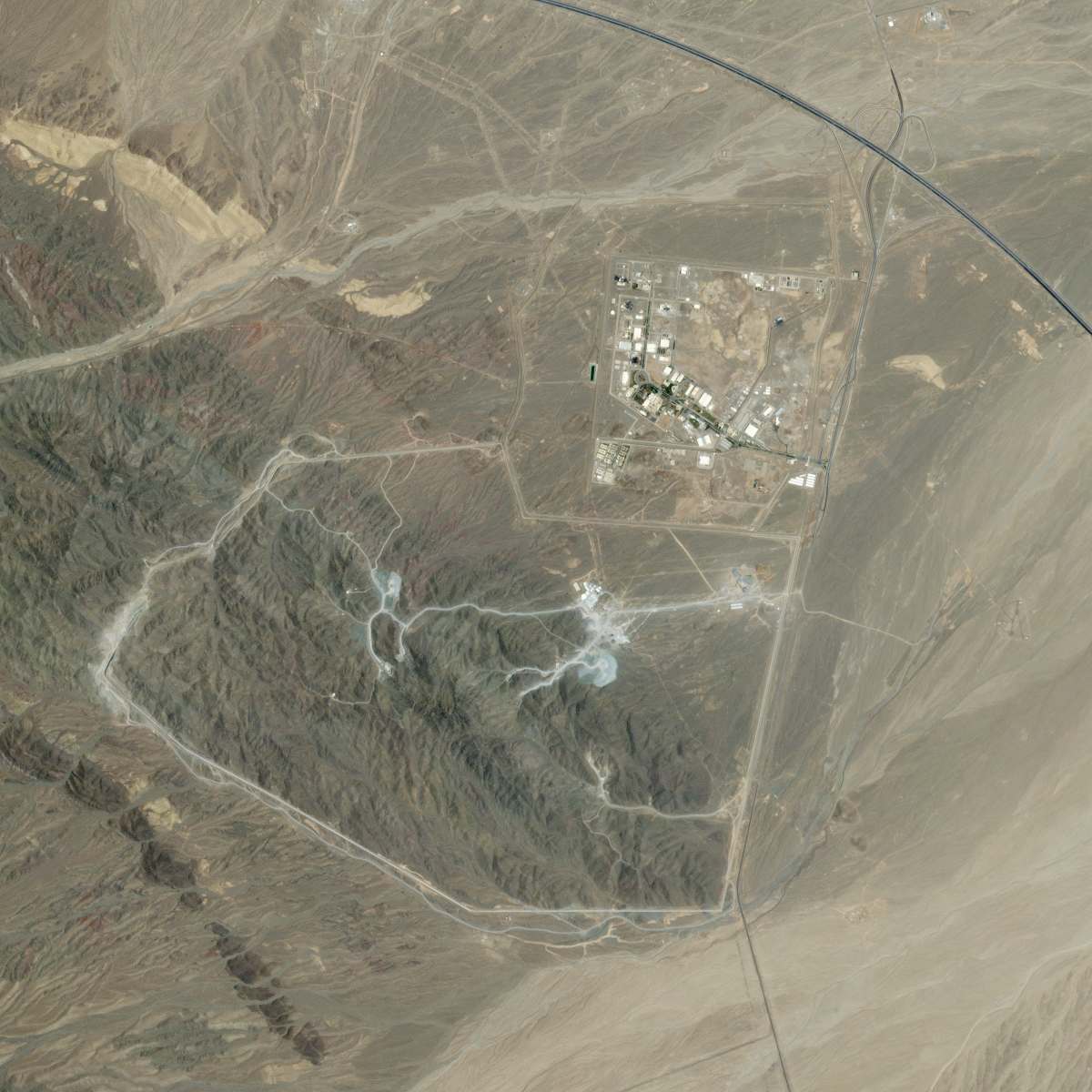
Aerial view of the Fordow nuclear facility, situated in a mountainous desert landscape in Iran.
The facility houses approximately 2,000 centrifuges, including advanced IR-6 models capable of rapidly enriching uranium to weapons-grade levels 5. International Atomic Energy Agency inspectors have detected uranium enriched to 83.7 percent purity at the site, dangerously close to the 90 percent threshold required for nuclear weapons 45.
Fordow’s defensive systems extend far beyond its natural mountain protection 518. The facility is shielded by multiple layers of reinforced concrete, with Iranian engineers reportedly using concrete formulations exceeding 30,000 PSI compressive strength 2. S-300 surface-to-air missile systems provide additional protection against aerial attacks 18.
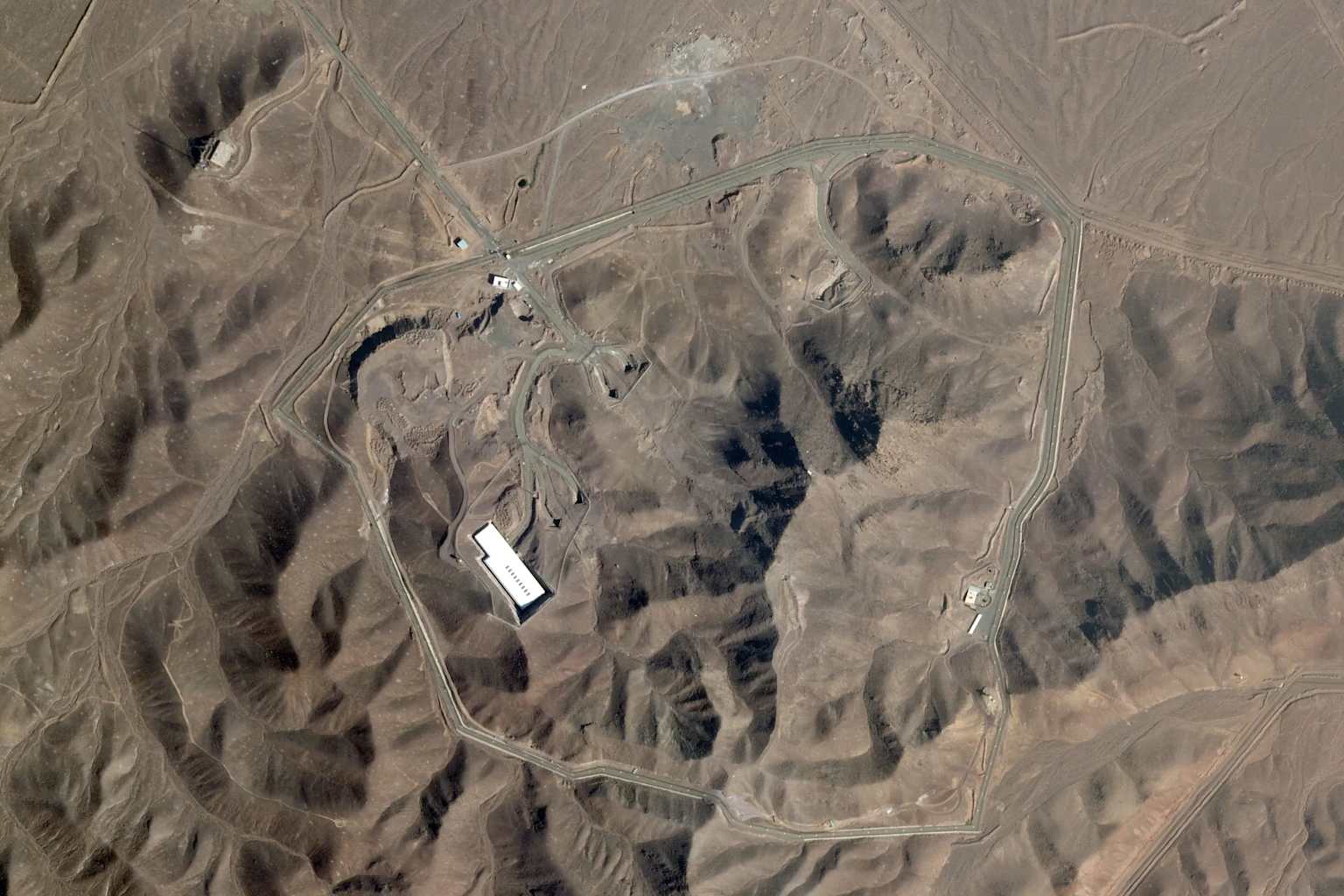
An aerial view of the Fordow nuclear facility in Iran, showcasing its secluded mountainous location and internal structures.
The depth and hardening of Fordow present unprecedented challenges even for the GBU-57 MOP 24. While the weapon can penetrate 60 meters of standard concrete, reaching the facility’s centrifuge halls may require penetrating 80-110 meters through a combination of rock and ultra-high-strength concrete 419.
Deployment Requirements and Constraints
The GBU-57 MOP’s enormous size and weight restrict its deployment to a single aircraft platform: the B-2 Spirit stealth bomber 82021. This strategic bomber is the only aircraft in the world configured to carry the massive weapon, with each B-2 capable of carrying up to two MOPs simultaneously 2122.
The B-2’s stealth capabilities are essential for penetrating sophisticated air defense networks surrounding high-value targets like Fordow 2023. The bomber’s radar cross-section is reportedly similar to that of a small bird, allowing it to evade detection by most radar systems 20.
Operating from bases in Missouri, B-2 bombers would need to fly approximately 6,000 miles to reach Iranian targets, requiring in-flight refueling to complete the mission 2123. The aircraft’s maximum range of 11,500 miles with one refueling provides the necessary endurance for such operations 21.
Only 21 B-2 Spirit bombers were ever constructed, with 20 remaining in active service as of 2025 22. This limited fleet represents a critical constraint on America’s ability to conduct sustained operations using the GBU-57 MOP 22.
Strategic and Technical Limitations
Despite its impressive capabilities, the GBU-57 MOP faces significant limitations when considering an attack on Fordow 1924. The weapon has never been used in combat, with its effectiveness against the most heavily defended targets remaining theoretical 19.
Intelligence estimates suggest that successfully destroying Fordow might require multiple GBU-57 strikes against the same target 419. The facility’s compartmentalized design and multiple protective layers could allow portions of the complex to survive even a direct hit 24.
Iranian defensive measures add additional complexity to any potential strike 425. GPS jamming capabilities could degrade the weapon’s precision guidance, while the facility’s location near Qom carries significant religious and political implications 418.
The limited number of GBU-57 bombs available—approximately 20 as of 2015—constrains operational planning 19. Each weapon represents a significant investment in both financial and strategic terms, requiring careful consideration of target prioritization 11.
Current Military and Political Context
Recent Israeli airstrikes against Iranian nuclear facilities have intensified focus on the GBU-57 MOP’s potential role in future operations 67. While Israel has successfully targeted above-ground installations at sites like Natanz, the deeply buried centrifuge halls at Fordow remain beyond the reach of Israeli weapons 78.
President Trump’s administration has reportedly considered direct U.S. military action against Iranian nuclear facilities, with Fordow identified as a primary target requiring the GBU-57 MOP 626. However, such operations would represent a significant escalation in the conflict, with potential consequences extending far beyond the immediate military objectives 1927.
Israeli Prime Minister Benjamin Netanyahu has suggested that Israel possesses the capability to target all Iranian nuclear installations, including Fordow, though military experts remain skeptical about Israel’s ability to neutralize the underground facility without U.S. assistance 7. The unique characteristics of the GBU-57 MOP make American involvement potentially decisive in any comprehensive campaign against Iran’s nuclear program 824.
Alternative Approaches and Future Developments
Military planners have explored various alternatives to direct kinetic strikes against Fordow 41928. Cyber warfare operations, similar to the 2010 Stuxnet attacks, could potentially disrupt the facility’s operations without requiring physical destruction 419.
Special operations forces have reportedly developed contingency plans for ground-based sabotage operations against the facility 28. Such missions would involve extreme risks but could potentially achieve strategic objectives while avoiding the escalatory risks associated with conventional bombing 28.
The upcoming B-21 Raider stealth bomber is expected to be configured for carrying the GBU-57 MOP, potentially expanding America’s bunker-busting capabilities in the future 2. However, the B-21’s operational timeline extends beyond current crisis scenarios involving Iran’s nuclear program 2.
Conclusion
The GBU-57 Massive Ordnance Penetrator represents the current pinnacle of conventional bunker-busting technology, specifically designed to challenge the world’s most heavily fortified underground facilities 12. While its capabilities far exceed those of previous generations of penetrating weapons, the unique characteristics of Iran’s Fordow facility present unprecedented challenges even for this formidable weapon 419.
The strategic implications of deploying the GBU-57 MOP against Fordow extend far beyond the immediate military objectives, potentially reshaping regional security dynamics and international nuclear policy 1927. As tensions continue to escalate in the Middle East, the debate over this ultimate bunker buster bomb reflects broader questions about the role of military force in addressing proliferation challenges in an increasingly complex security environment 624.
The technical specifications and operational constraints surrounding the GBU-57 MOP highlight both the remarkable capabilities and inherent limitations of even the most advanced conventional weapons systems 212. Whether this powerful bunker buster bomb will ultimately be called upon to fulfill its designed mission against Fordow remains one of the most consequential military questions of our time 1924.
Footnotes
-
https://www.washingtonpost.com/national-security/2025/06/17/massive-ordnance-penetrator-iran-bunker-buster/ ↩ ↩2
-
https://en.wikipedia.org/wiki/GBU-57A/B_MOP ↩ ↩2 ↩3 ↩4 ↩5 ↩6 ↩7 ↩8 ↩9 ↩10 ↩11 ↩12 ↩13 ↩14 ↩15
-
https://www.airandspaceforces.com/weapons-platforms/gbu-57-mop/ ↩ ↩2
-
https://www.csis.org/analysis/three-things-will-determine-irans-nuclear-future-fordow-just-one-them ↩ ↩2 ↩3 ↩4 ↩5 ↩6 ↩7 ↩8 ↩9 ↩10 ↩11
-
https://www.ynetnews.com/health_science/article/bydahnzvgx ↩ ↩2 ↩3 ↩4 ↩5 ↩6
-
https://www.washingtonpost.com/opinions/2025/06/20/iran-israel-war-trump-netanyahu-fordow/ ↩ ↩2 ↩3 ↩4
-
https://nypost.com/2025/06/19/us-news/israeli-prime-minister-benjamin-netanyahu-implies-israel-can-take-out-fordow-without-us-help/ ↩ ↩2 ↩3 ↩4
-
https://www.foxbusiness.com/politics/usaf-general-talks-remarkable-aircraft-needed-30000lb-bomb-were-dropped-iran-nuke-site ↩ ↩2 ↩3 ↩4
-
https://english.iswnews.com/37969/military-knowledge-gbu-57-massive-ordnance-penetrator/ ↩ ↩2 ↩3 ↩4 ↩5
-
https://www.af.mil/About-Us/Fact-Sheets/Display/Article/104614/massive-ordnance-penetrator/ ↩ ↩2 ↩3
-
https://www.defencetoday.com/military-equipment/gbu-57-massive-ordnance-penetrator/ ↩ ↩2 ↩3 ↩4 ↩5 ↩6
-
https://airpra.com/know-the-best-of-the-gbu-57-massive-ordnance-penetrator/ ↩
-
https://www.usatoday.com/story/graphics/2025/06/18/how-does-a-bunker-buster-bomb-work-b2-spirit-stealth-bomber-gbu-57-fordow-nuclear-site/84257217007/ ↩
-
https://en.wikipedia.org/wiki/Fordow_Fuel_Enrichment_Plant ↩ ↩2 ↩3 ↩4
-
https://www.csis.org/analysis/options-targeting-irans-fordow-nuclear-facility ↩ ↩2 ↩3 ↩4 ↩5 ↩6 ↩7 ↩8 ↩9 ↩10 ↩11
-
https://www.reuters.com/business/aerospace-defense/us-b-2-bombers-bunker-busters-alternatives-2025-06-18/ ↩ ↩2 ↩3
-
https://www.timesofisrael.com/the-us-bunker-buster-bomb-that-could-destroy-irans-fordo-nuclear-facility/ ↩ ↩2 ↩3 ↩4
-
https://www.northropgrumman.com/what-we-do/aircraft/b-2-stealth-bomber/technical-details ↩ ↩2
-
https://www.washingtoninstitute.org/policy-analysis/united-states-may-destroy-fordow-enrichment-plant-it-wont-make-iranian-nuclear ↩ ↩2 ↩3 ↩4 ↩5
-
https://breakingdefense.com/2025/05/irans-air-defenses-around-nuclear-site-more-brittle-than-expected-exclusive-analysis/ ↩
-
https://www.aljazeera.com/news/2025/6/19/what-is-irans-fordow-nuclear-facility-and-could-us-weapons-destroy-it ↩
-
https://nationalsecurityjournal.org/why-an-attack-on-fordow-could-be-a-strategic-gift-to-iran/ ↩ ↩2
-
https://www.jfeed.com/middleeast/israeli-commando-raid-fordow ↩ ↩2 ↩3